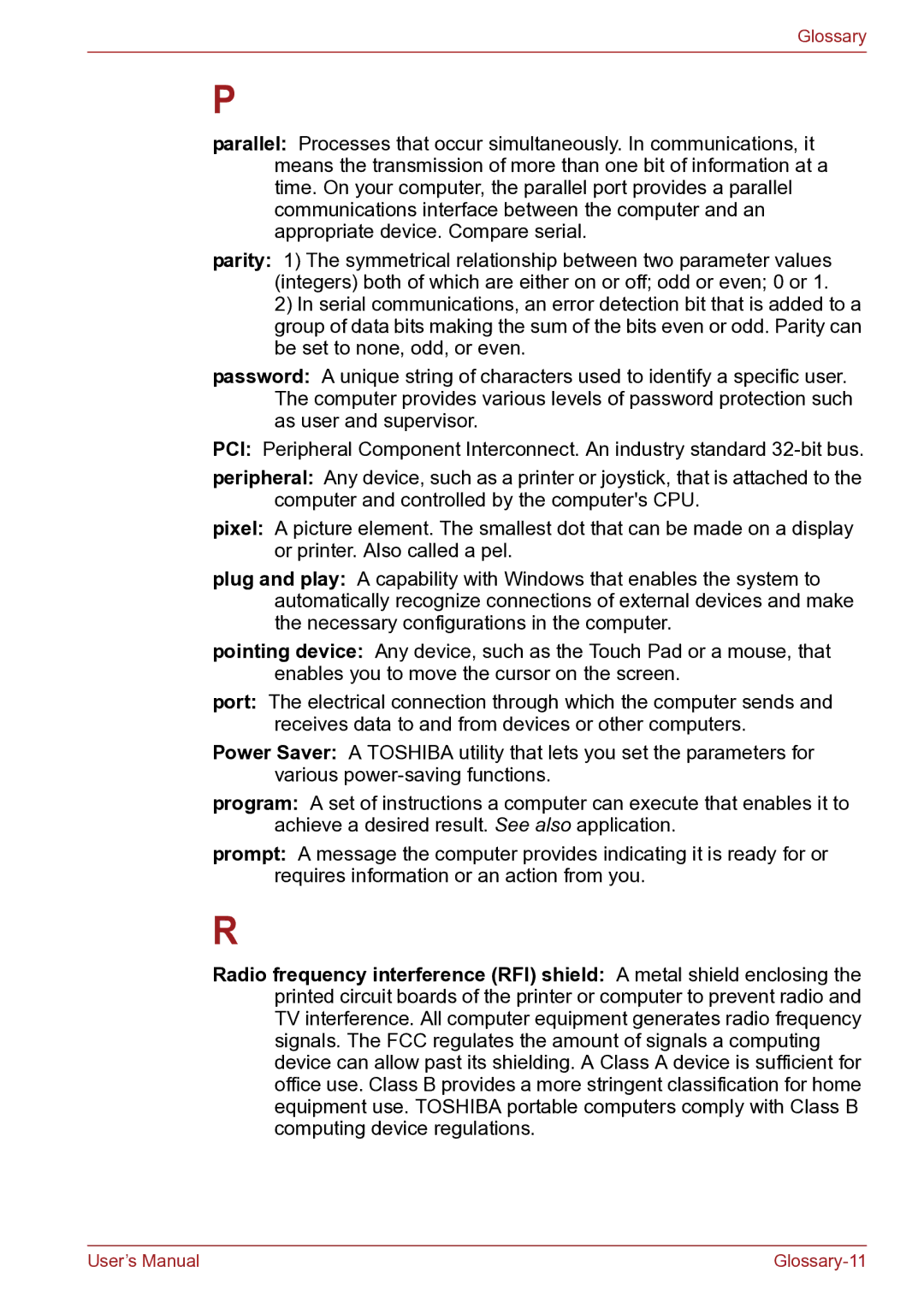
Glossary
P
parallel: Processes that occur simultaneously. In communications, it means the transmission of more than one bit of information at a time. On your computer, the parallel port provides a parallel communications interface between the computer and an appropriate device. Compare serial.
parity: 1) The symmetrical relationship between two parameter values (integers) both of which are either on or off; odd or even; 0 or 1.
2)In serial communications, an error detection bit that is added to a group of data bits making the sum of the bits even or odd. Parity can be set to none, odd, or even.
password: A unique string of characters used to identify a specific user. The computer provides various levels of password protection such as user and supervisor.
PCI: Peripheral Component Interconnect. An industry standard
peripheral: Any device, such as a printer or joystick, that is attached to the computer and controlled by the computer's CPU.
pixel: A picture element. The smallest dot that can be made on a display or printer. Also called a pel.
plug and play: A capability with Windows that enables the system to automatically recognize connections of external devices and make the necessary configurations in the computer.
pointing device: Any device, such as the Touch Pad or a mouse, that enables you to move the cursor on the screen.
port: The electrical connection through which the computer sends and receives data to and from devices or other computers.
Power Saver: A TOSHIBA utility that lets you set the parameters for various
program: A set of instructions a computer can execute that enables it to achieve a desired result. See also application.
prompt: A message the computer provides indicating it is ready for or requires information or an action from you.
R
Radio frequency interference (RFI) shield: A metal shield enclosing the printed circuit boards of the printer or computer to prevent radio and TV interference. All computer equipment generates radio frequency signals. The FCC regulates the amount of signals a computing device can allow past its shielding. A Class A device is sufficient for office use. Class B provides a more stringent classification for home equipment use. TOSHIBA portable computers comply with Class B computing device regulations.
User’s Manual |
|
